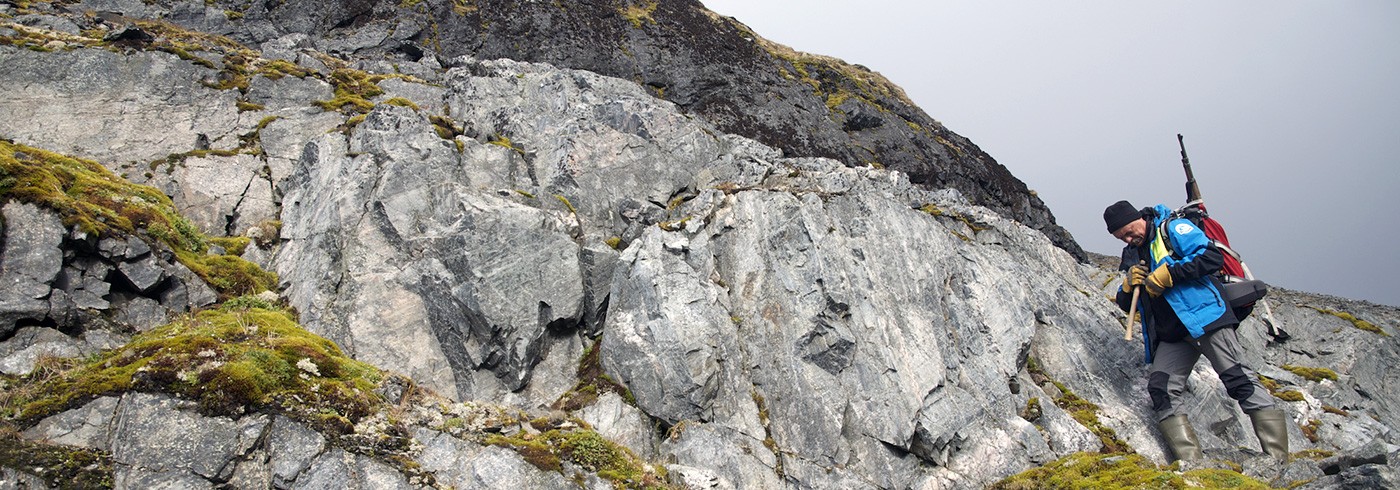We woke up in an absolutely calm morning. Still a lot of moisture and some fog in the air, but good weather conditions for the move to camp 2, at least to try to get the first equipment there.
A short breakfast and then we loaded the Zodiac to the limit of volume capacity, building more than a metre high. There was just enough space for Majek to drive and myself to sit in the front, like in a beach chair, leaning back against the cargo with the legs over the bow. What a sightseeing trip! The mountains of northern Prins Karls Forland in clouds and fog, the sun coming through from time to time. Steep hanging glaciers, rocky needles penetrating the clouds. Just the poor remains of the glaciers at sea level do not fit the picture – it must have been even more majestic before. But this is nothing to be concerned about – glaciers have advanced and retreated many times before in Earth’s history.
After about one and a half hours ride we reached Selvågen in central Prins Karls Forland. On the northern side of the bay, camping on a sandbar called ”Klubben”, we met a couple who were on their way from Danskøya in northwestern Svalbard to Longyearbyen. After some smalltalk, we preceded to the southern shore and found a beautiful campsite.
After unloading, a bumpy ride in an empty Zodiac took us back to Richardlaguna – the wind had increased in the meantime and fall winds from the glaciers generated crossing waves. There we could fit all of us five and the remaining equipment into the Zodiac. Not much space for the feet, except on the driver’s place. 🙂
The wind had dropped and a fully loaded boat behaves better in the waves. And thanks to the powerful 40 hp four-stroke engine this was just another quick ride of about 1,5 hours. This would never have been possible with the engines used before! Now camp 2 is up in an enchanting surrounding and tomorrow we will start with the reconnaissance.
Position of NOA-Svalbard camp 2: 78º32.401’N, 11º17.070’E
Henning Lorenz, Uppsala universitet









